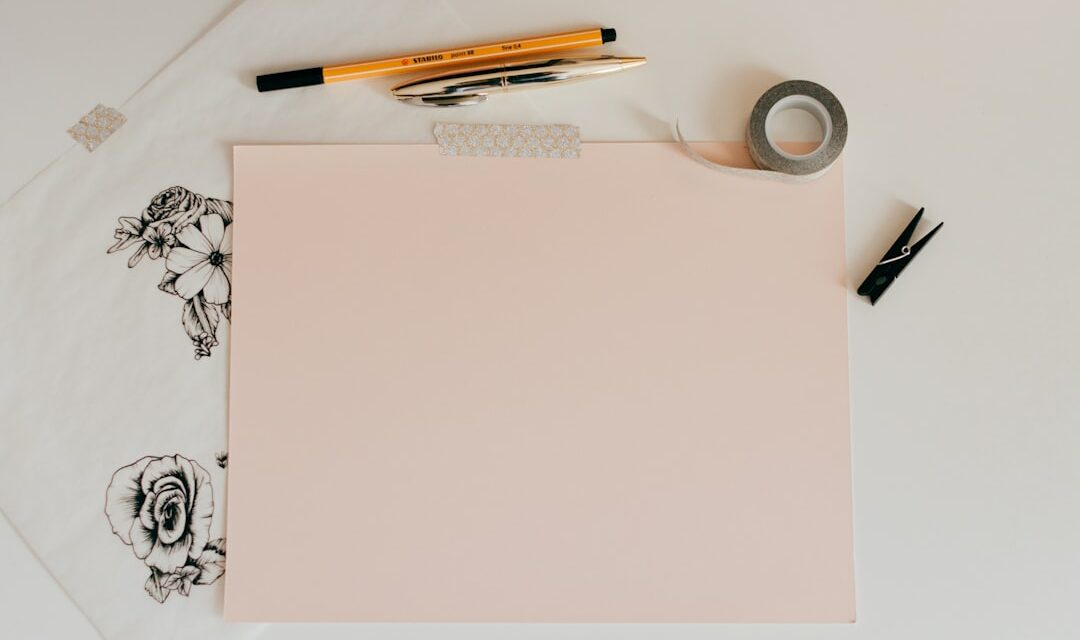Cast paper is a unique and versatile medium that combines the traditional techniques of papermaking with sculptural elements. Unlike conventional paper, which is typically produced by pressing and drying a slurry of cellulose fibres, cast paper involves pouring a slurry into a mould, allowing it to take on the shape and texture of the form. This process results in a three-dimensional object that retains the qualities of paper while also exhibiting the characteristics of sculpture.
The final product can be both delicate and robust, making it an intriguing choice for artists looking to explore the boundaries between two-dimensional and three-dimensional art forms. The beauty of cast paper lies not only in its physical properties but also in its potential for artistic expression. Artists can manipulate the texture, colour, and form of the paper to create intricate designs that evoke a range of emotions and ideas.
The medium allows for a high degree of creativity, as it can be combined with other materials such as paint, ink, or mixed media to enhance its visual impact. Cast paper can be used for various applications, including wall art, sculptures, and functional objects, making it a popular choice among contemporary artists seeking to push the limits of traditional papermaking.
Summary
- Cast paper is a form of art that involves creating paper sculptures by casting pulp into moulds.
- The history of cast paper dates back to ancient China and Japan, where it was used for religious and ceremonial purposes.
- Materials and tools needed for cast paper include paper pulp, moulds, water, and a deckle and mould set.
- The process of making cast paper involves preparing the pulp, pouring it into moulds, and pressing out excess water to create the desired shape.
- Techniques and methods for creating cast paper art include layering, embossing, and adding pigments or other materials to the pulp.
The History of Cast Paper
The origins of cast paper can be traced back to ancient civilisations that utilised papermaking techniques for various purposes. The earliest forms of paper were created in China around 105 AD, where artisans developed methods to produce sheets from plant fibres. However, the specific practice of casting paper into moulds emerged much later, gaining prominence in the 20th century as artists began to experiment with new materials and techniques.
The movement towards cast paper was influenced by the broader trends in modern art, particularly the rise of sculpture and mixed media practices that sought to challenge conventional definitions of art. In the 1960s and 1970s, artists such as Robert Rauschenberg and Andy Warhol began to explore the possibilities of combining paper with sculptural elements, paving the way for the development of cast paper as a distinct art form. This period saw a growing interest in process-oriented art, where the act of creation became as significant as the final product.
As artists experimented with different moulding techniques and materials, cast paper gained recognition as a legitimate medium within the art world. Today, it is celebrated for its ability to bridge the gap between painting and sculpture, allowing artists to create works that are both visually striking and conceptually rich.
Materials and Tools Needed for Cast Paper

Creating cast paper requires a specific set of materials and tools that facilitate the process of moulding and shaping the paper pulp. The primary ingredient is, of course, the paper pulp itself, which can be made from various sources such as recycled paper, cotton linters, or even plant fibres like abaca or kozo. Each type of pulp offers different textures and qualities, allowing artists to choose materials that best suit their artistic vision.
Additionally, water is essential for creating the slurry that will be poured into moulds. In terms of tools, artists typically need a variety of moulds to shape their cast paper creations. These moulds can be made from silicone, plaster, or even found objects, depending on the desired outcome.
A blender or a hollander beater is often used to break down the paper into a fine pulp, while screens or mesh can help drain excess water from the slurry. Other useful tools include sponges for absorbing moisture, brushes for applying colour or texture, and various sculpting tools for refining details. Having a well-equipped workspace is crucial for artists looking to delve into cast paper, as it allows for greater experimentation and creativity.
The Process of Making Cast Paper
The process of making cast paper begins with preparing the pulp. Artists typically start by tearing their chosen paper into small pieces and soaking them in water for several hours or overnight. Once the fibres have softened, they are blended into a smooth slurry using a blender or hollander beater.
The consistency of the pulp is crucial; it should be thick enough to hold its shape when poured but fluid enough to flow easily into the mould. After achieving the desired texture, artists may choose to add pigments or other additives to enhance the colour and visual appeal of their cast paper. Once the pulp is ready, it is poured into the chosen mould.
This step requires careful attention to ensure that the pulp fills all areas of the mould evenly. Artists may use their hands or tools to manipulate the pulp within the mould, creating textures or patterns as desired. After pouring, the mould is typically left to dry for several hours or even days, depending on factors such as humidity and thickness.
Once fully dried, the cast paper can be carefully removed from the mould, revealing a unique piece that embodies both the qualities of paper and sculpture. This process allows for endless possibilities in terms of form and design, making cast paper an exciting medium for artistic exploration.
Techniques and Methods for Creating Cast Paper Art
There are numerous techniques and methods that artists can employ when creating cast paper art, each offering distinct aesthetic outcomes. One popular technique involves layering different colours of pulp within a single mould to create depth and complexity in the final piece. By pouring multiple layers at varying thicknesses, artists can achieve a sense of translucency and luminosity that adds visual interest.
This method also allows for experimentation with colour blending and texture variation, resulting in dynamic compositions that engage viewers on multiple levels. Another technique involves incorporating found objects or natural materials into the cast paper process. Artists may embed leaves, flowers, or other organic elements within the pulp before it dries, creating intricate patterns and textures that reflect nature’s beauty.
This method not only enhances the visual appeal of the artwork but also adds an element of storytelling, as each embedded object carries its own significance. Additionally, artists can experiment with different mould shapes and sizes to create unique forms that challenge traditional notions of what paper can be. By pushing these boundaries, cast paper artists continue to innovate and redefine their medium.
Examples of Cast Paper Art

Cast paper art has gained recognition in galleries and exhibitions worldwide, showcasing a diverse range of styles and approaches. One notable example is the work of artist Annette Messager, who uses cast paper techniques to create intricate installations that explore themes of identity and memory. Her pieces often incorporate elements such as fabric and found objects alongside cast paper forms, resulting in visually striking compositions that invite viewers to engage with complex narratives.
Another prominent artist in this field is David Nash, known for his large-scale sculptures made from cast paper combined with wood and other materials. His works often reflect his deep connection to nature and environmental themes, using organic shapes and textures to evoke a sense of harmony between art and the natural world. These examples illustrate how cast paper can transcend traditional boundaries, allowing artists to create works that are not only visually captivating but also rich in meaning.
Tips for Beginners in Cast Paper Art
For those new to cast paper art, starting with simple projects can help build confidence and understanding of the medium’s nuances. It is advisable to begin with basic mould shapes before progressing to more complex designs. Experimenting with different types of pulp can also yield interesting results; beginners might find it beneficial to try out various materials such as recycled paper or cotton linters to see how they behave during casting.
Keeping a journal to document experiments can provide valuable insights into what works well and what does not. Additionally, joining workshops or online communities focused on cast paper art can offer support and inspiration for beginners. Engaging with other artists allows newcomers to learn from experienced practitioners while sharing their own discoveries along the way.
It is essential to embrace mistakes as part of the learning process; each unsuccessful attempt provides an opportunity for growth and innovation. With patience and practice, beginners can develop their skills and find their unique voice within this captivating medium.
The Future of Cast Paper in the Art World
As contemporary art continues to evolve, so too does the role of cast paper within it. The medium’s inherent versatility allows artists to explore new themes and concepts while pushing traditional boundaries. With advancements in technology and materials science, there are exciting possibilities on the horizon for cast paper art.
For instance, innovations in sustainable materials may lead to more eco-friendly options for creating pulp, aligning with growing concerns about environmental impact within the art community. Moreover, as interdisciplinary practices gain traction in contemporary art, cast paper is likely to play an increasingly significant role in collaborative projects that merge various artistic disciplines. Artists may find new ways to integrate digital technologies with traditional casting methods or combine cast paper with performance art or installation work.
This potential for cross-pollination between different mediums suggests that cast paper will continue to thrive as an innovative form of artistic expression in the years to come. As artists embrace these opportunities for experimentation and collaboration, cast paper will undoubtedly remain a vital part of the evolving landscape of contemporary art.
For those intrigued by unique art forms and techniques, exploring the realm of Cast paper art can be quite enriching. If you find yourself captivated by the intersection of art and biology, you might also appreciate delving into another fascinating area known as Bio Art. This innovative art form integrates biological elements with artistic expression, offering a profound insight into the life sciences through a creative lens. To learn more about this intriguing art technique, you may visit An Introduction to Bio Art, which provides a comprehensive overview and could significantly enhance your understanding and appreciation of contemporary art practices.




